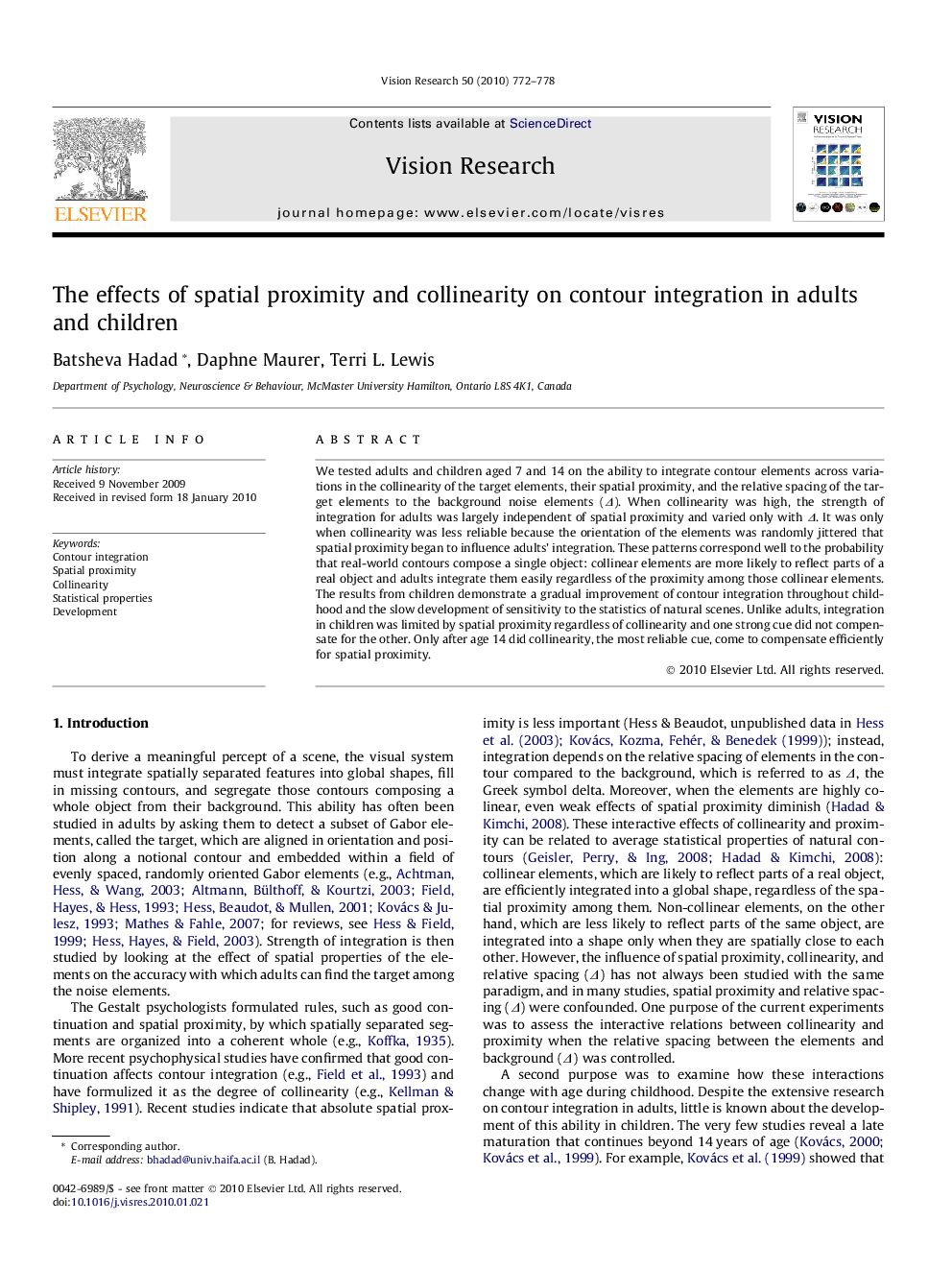| کد مقاله | کد نشریه | سال انتشار | مقاله انگلیسی | نسخه تمام متن |
|---|---|---|---|---|
| 6203846 | 1263458 | 2010 | 7 صفحه PDF | دانلود رایگان |

We tested adults and children aged 7 and 14 on the ability to integrate contour elements across variations in the collinearity of the target elements, their spatial proximity, and the relative spacing of the target elements to the background noise elements (Î). When collinearity was high, the strength of integration for adults was largely independent of spatial proximity and varied only with Î. It was only when collinearity was less reliable because the orientation of the elements was randomly jittered that spatial proximity began to influence adults' integration. These patterns correspond well to the probability that real-world contours compose a single object: collinear elements are more likely to reflect parts of a real object and adults integrate them easily regardless of the proximity among those collinear elements. The results from children demonstrate a gradual improvement of contour integration throughout childhood and the slow development of sensitivity to the statistics of natural scenes. Unlike adults, integration in children was limited by spatial proximity regardless of collinearity and one strong cue did not compensate for the other. Only after age 14 did collinearity, the most reliable cue, come to compensate efficiently for spatial proximity.
Journal: Vision Research - Volume 50, Issue 8, 7 April 2010, Pages 772-778